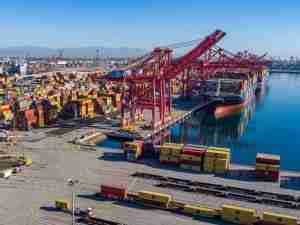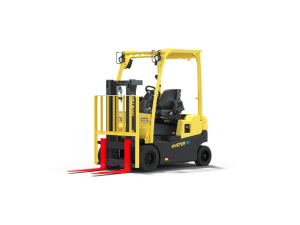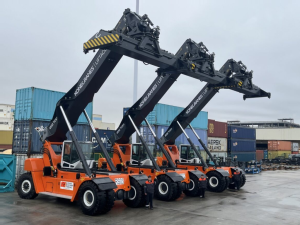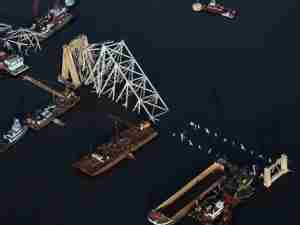The top-level consultations in the inland container shipping sector – which are facilitated by the Port of Rotterdam Authority – have yielded a number of tangible results. These results show that shippers, forwarders, barge operators, inland terminals, deep sea terminals and shipping companies take the congestion issues in the port of Rotterdam seriously and want to make a joint effort to resolve them.
Allard Castelein, CEO Port of Rotterdam: “I welcome the fact that we now have a clearer picture of the bottlenecks, and that the participants have a better understanding of each party’s position. Clearly, participants have made progress, but our objective has not been achieved yet. That is why we have to step up our efforts. The Inland Container Shipping Sector Consultations have produced several good possible solutions. Going forward, we now need to put them into practice. It means that the chain-wide performance indicator has to be ready by this summer. In addition, more pilot projects must be in place so that possible solutions can be tested in day-to-day operations. All parties involved must initiate more initiatives”.
Basic setup for the consultations
A total of 19 Dutch and international parties1 presently participate in the Inland Container Shipping Sector Consultations. So far, there have been four plenary meetings, held since September 2017. During these meetings, the participants discussed the progress made by three working groups, each of which had been assigned a specific task. One working group is responsible for fact-finding with regard to the relationships and balances of power within the inland container shipping sector’s logistics chain. A second working group was asked to identify quick wins within the operational planning process. The third group worked to establish KPIs that can lead to chain-wide insight into the performance of the inland container shipping chain, as well as crucial transfer moments within consecutive links within this chain.
Results
The Inland Container Shipping Sector Consultations have yielded the following concrete results:
- Improvement of the slot application procedure for inland vessels that plan to load or unload containers at the terminals. In addition, all consecutive changes to the original slot application – changes to the call size, for example – will henceforth be stored in the Portbase port community system. Together, these measures make it easier for both terminal operators and barge operators to draw up their schedules and gain better insight into the current status of the handling process.
- In the past two months, the Port of Rotterdam Authority has awarded funding to two sector initiatives, in which deep sea terminals, inland shipping companies and inland terminals working together to combine cargo and transport this cargo according to a fixed sailing schedule along major routes between Rotterdam and the hinterland. The Port Authority announced earlier this week that it will be supporting the partnership between HTS Intermodaal, the RWG deep sea terminal RWG and the D3T inland terminal in Duisburg aimed at establishing a new fixed sailing schedule between Duisburg, Gorinchem and Rotterdam. Earlier this year, the Port Authority announced that it would support a similar project along the so-called West-Brabant Corridor (Rotterdam-Moerdijk-Tilburg). The combining of cargo means that fewer ships are required – resulting in less congestion in the port of Rotterdam. In the first three months of this collaboration, the fixed sailing schedule has increased call sizes at the terminals by 100% and resulted in more reliable handing at the terminals, more container transport via inland shipping and less reliance on road haulage. In addition, vessels’ average waiting time in the port area until they can be handled has decreased by some 30%.
- Development of a chain performance dashboard by the Port of Rotterdam Authority. Individual chain parties have committed to work towards a clear, fact-based inventory of performance indicators for crucial transfer moments between consecutive links in the inland container shipping chain. The improved insight into chain performance yielded by this dashboard will make it easier for participating parties to identify the source of a congestion issue and jointly work towards a solution.
- Parties have performed an analysis of the factors causing congestion within the inland container shipping chain. One of the outcomes of this analysis is a variety of directions in which the chain can look for solutions. The chain parties will need to work together under the direction of the Port Authority to set priorities regarding which long-term solutions they will pursue on the basis of a targeted in-depth improvement programme. These priorities will be worked out in further detail in the period ahead.
- A visible increase in the number of bilateral agreements between chain parties to utilise the available capacity and increase reliability within the chain. Among other things, this is achieved by reducing so-called ‘no shows’ and exploiting handling capacity that becomes available at short notice.
Additional investments
Parallel to the results achieved within the Inland Container Shipping Sector Consultations, the Port Authority and the local private sector will continue to invest in initiatives aimed at improving container circulation via the port of Rotterdam.
For example, in March 2018, the Port Authority gave the go-ahead for the construction of the Container Exchange Route. In the same month, the Kramer Group substantially expanded the number of dedicated inland shipping shuttles between its terminal in Eemhaven and the APMT and RWG deep sea container terminals on Maasvlakte.
Since the beginning of this year, ECT has been collaborating with three inland shipping consortia within a pilot project that makes use of so-called fixed window for inland vessels with large call sizes. In addition, both ECT and APMT have announced that they will be recruiting extra operational staff.
The Port Authority will continue to invest in Nextlogic, the digital tool that allows barge operators and terminal operators to exchange information relating to the handling of containers. In due time, other parties are also expected to join this information platform. We expect to have rounded off work on BREIN, Nextlogic’s centralised planning tool, by late 2018.
Allard Castelein, CEO of the Port of Rotterdam Authority: “Good accessibility and the smooth flow of cargo to the European hinterland are crucial for a major sea port like Rotterdam. Any measure we can take to reduce congestion in the port area is of vital importance. This calls for close collaboration between all parties in the logistics chain. As the Port Authority, we have taken on the responsibility of working to bring these different parties together. Despite the results achieved so far, congestion remains a complex systemic problem that we cannot resolve with a few simple measures. Therefore, the Port Authority will keep facilitating consultation between the chain parties so that they can work together on new solutions. In addition, we will continue to develop assets that can contribute to the smooth flow of cargo through Rotterdam – like our Nextlogic planning tool, for example, or the construction of the Container Exchange Route.”
1 Participating organisations: APMT, BDB, BDI/DSVK, CBRB, Deltalinqs, EBU, ECT, evofenedex, FENEX/TLN, Royal BLN-Schuttevaer, LINc, the Ministry of Infrastructure and Water Management, RWG, SPEDLOGSWISS, SSC, SVS, VRC, VRTO and the Port of Rotterdam Authority.









